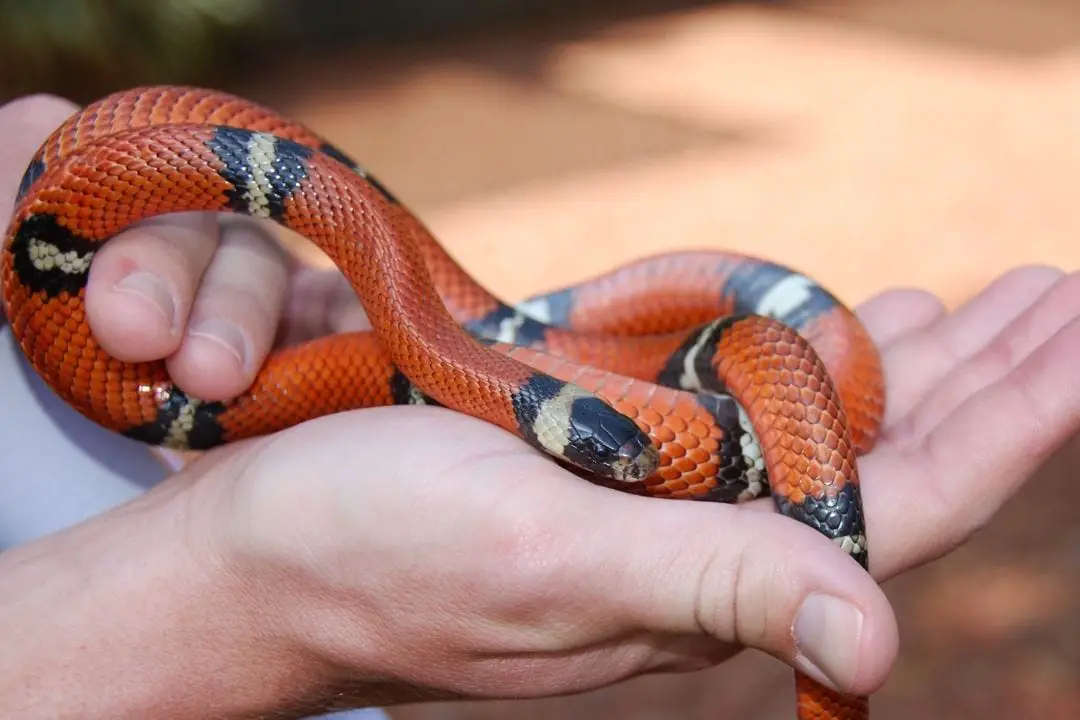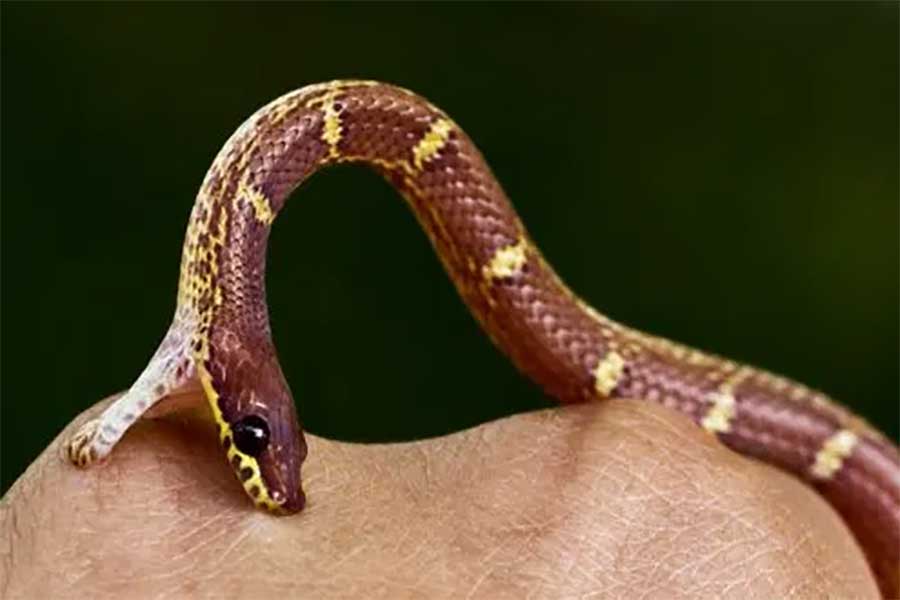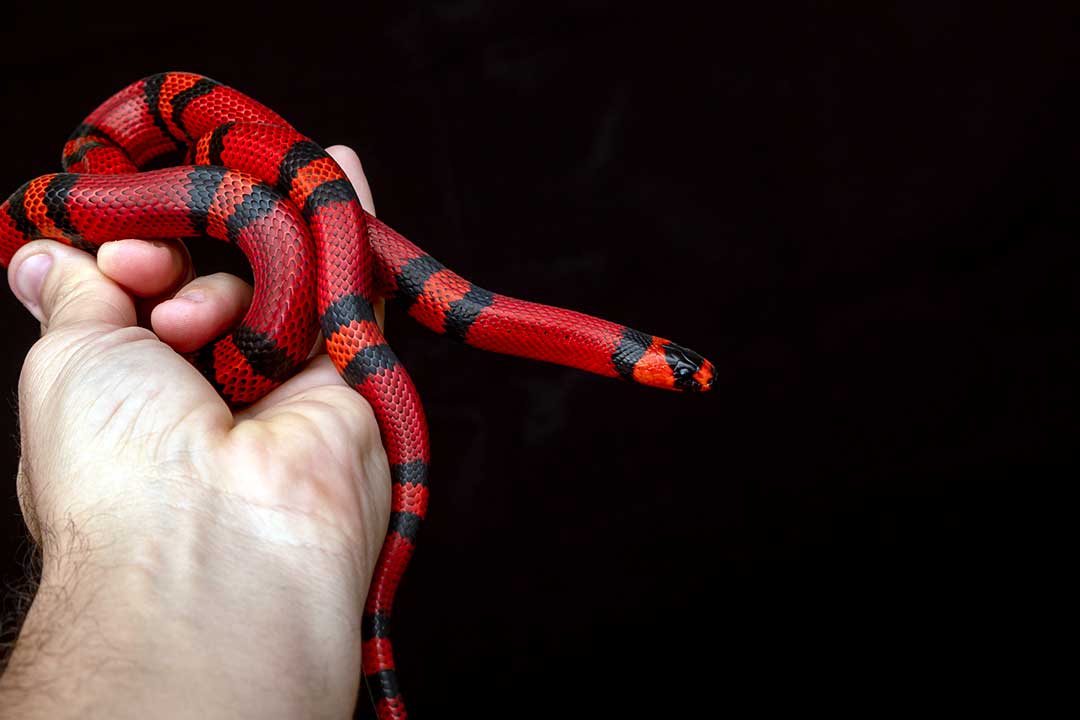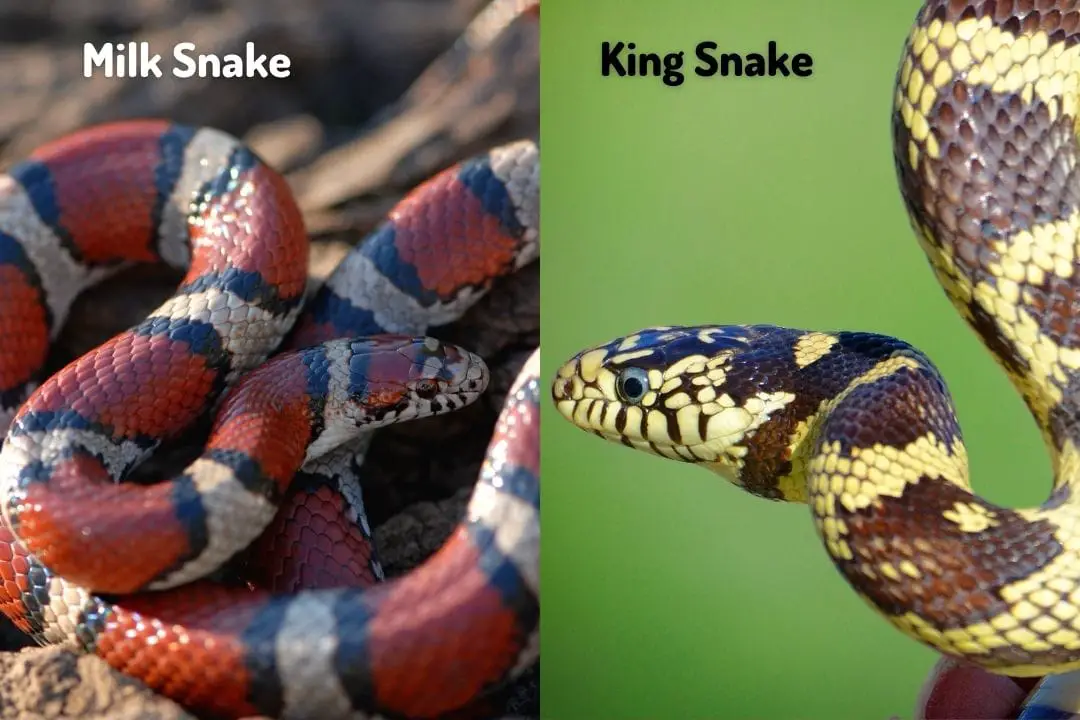If you are interested in keeping a milk snake, the Sinaloan milk snake is an excellent choice. They are one of the most common subspecies in captivity.
These striking animals have a banded appearance. You can also get a few different colors such as an albino Sinaloan milk snake.
This article will teach you what you need to know to keep a milk snake in captivity.
The Sinaloan milk snake (Lampropeltis triangulum sinaloae) is a subspecies of milk snake that is native to Mexico. As the name implies, it can be found in the state of Sinaloa. Its wild range also includes the states of Sonora and Chihuahua.
These snakes are found in arid, semi-desert areas. During the day, they can be found under cacti or loose rocks. These snakes are nocturnal, so you will likely not see your snake much during the day.
Housing
This section will discuss what you need to keep your new Sinaloan milk snake happy. You will need an escape-proof enclosure that will help meet all your snake’s basic needs.
Enclosure
You will need an enclosure for your new snake. You will want something escape-proof with plenty of ventilation. It should be easy to access for feeding and basic snake care. It should also be easy to keep clean. You should fill it with decorations, at least two hides, and some branches or dowels for climbing.
Enclosure for Juvenile Sinaloan Milk Snakes
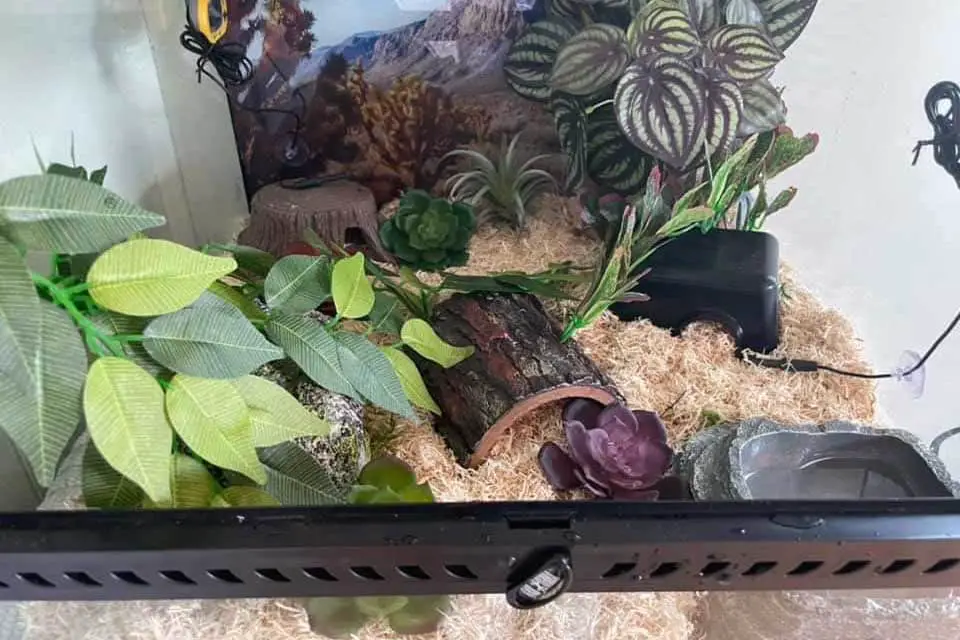
For juvenile snakes, the enclosure should be just a bit larger than the snake is long. It should also be at least 12 inches in height.
You can select a larger enclosure than your snake so you don’t need to invest too often. Just be sure to change it before the snake is twice as long as the enclosure.
You should be selecting an enclosure that allows for plenty of substrate and room for both hides and exercise for your snake. Milk snakes are active at night and will enjoy the exploration.
You should look for an enclosure that opens from the front since this is less stressful at feeding and handling times for juvenile snakes.
A 18X18X12 enclosure is a good option. It should be large enough for at least your snake’s first year. It is front opening and easy to clean. The bottom is raised for easy use of under-tank heating.
It also has hidden cable management so your enclosure looks nicer.
Enclosure for Adult Sinaloan Milk Snakes
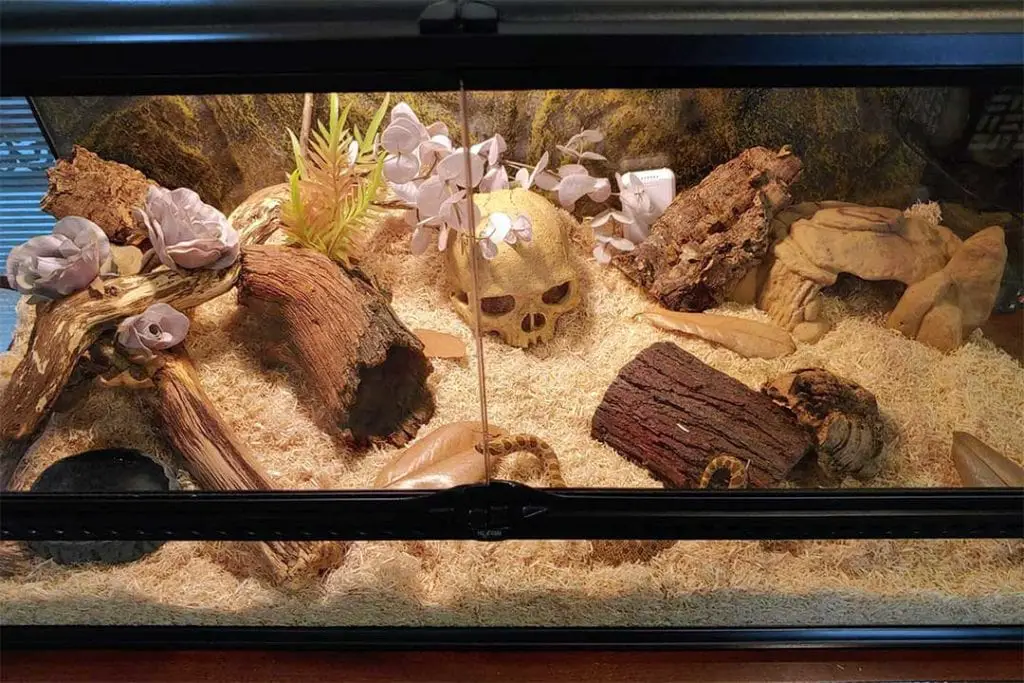
For an adult, you will want an enclosure that is the same length as your snake. A 4-foot tank is a typical choice since these snakes rarely exceed this size.
Your snake may end up smaller or larger. Going with something larger isn’t a bad idea since it gives your snake more room to exercise.
Just be sure to fill the space since these snakes dislike being in the open. Your tank should have adequate ventilation and be secure.
It should ideally open from the front since this makes handling and feeding less stressful for your snake. Be sure to consider how you will mount the under-tank heating when selecting an enclosure.
It should be front-opening and have plenty of ventilation. It allows for a decent layer of substrate and the bottom is raised to give access to under-tank heating. It also has a good lock so your snake will not escape.
Substrate
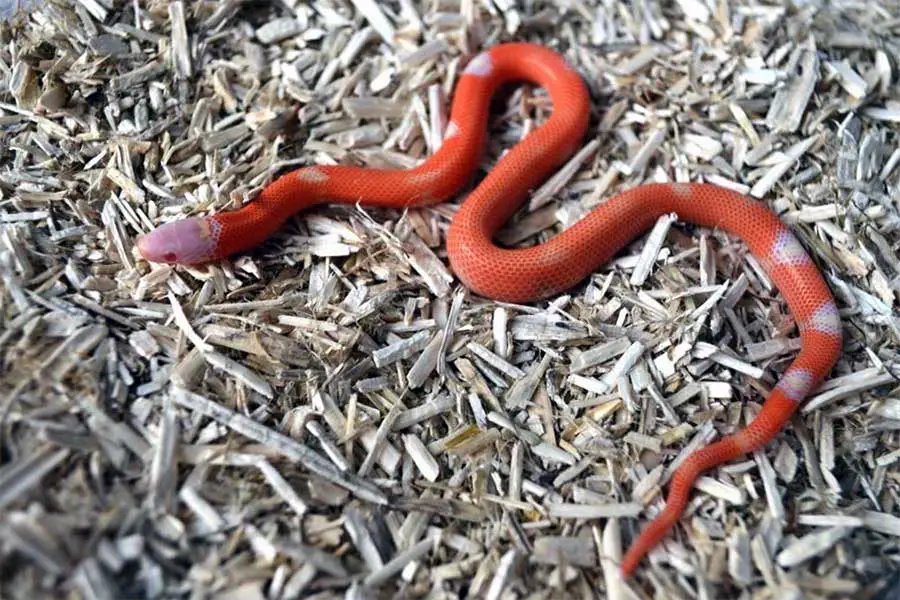
Your snake needs substrate for comfort, safety, and ease of cleaning. You should have a layer of paper or reptile carpet at the base of the tank to keep your snake from resting directly on the under-tank heater.
If your snake does this it could be injured from being overheated. Over this, you should have some type of substrate that allows your snake to burrow. Many colubrids like milk snakes enjoy burrowing.
You can use paper towels if you need to quarantine your snake for any reason. Otherwise, stick with a substrate that isn’t aromatic or too dry.
For instance, sand is too drying and may cause injury. Aspen shavings are very popular for snakes.
Make sure you don’t use pine or cedar since these can cause illness in snakes.
You can also use a mix of play sand and soil if you want to create a bio-active setup.
Heating
Snakes are ectotherms. This means they rely on environmental temperatures to regulate their internal body temperatures. Keeping this in a good range is important to make sure your snake doesn’t have problems with digestion.
If a snake eats when it isn’t warm enough to digest, the food can rot and make the snake ill. Sinaloan milk snakes need a temperature gradient in their enclosure.
The warm side of the sinaloan milk snake’s enclosure should be around 85 degrees. You should aim for around 72 degrees on the cool side.
The best way to achieve this is to use a heat mat placed under the tank on about 1/3 of the enclosure.
Plug it into a thermostat to control the heat output. You should have both a thermometer and a temperature gun to monitor the temperatures.
The thermometer can help monitor it at a glance and the temperature gun can confirm the surface temperature your snake is experiencing.
Ceramic heat bulbs are an option, but they can dry out an enclosure and cause shedding problems. They may help in colder climates, but you will need to monitor the enclosure and mist it if it is becoming too dry.
Lighting
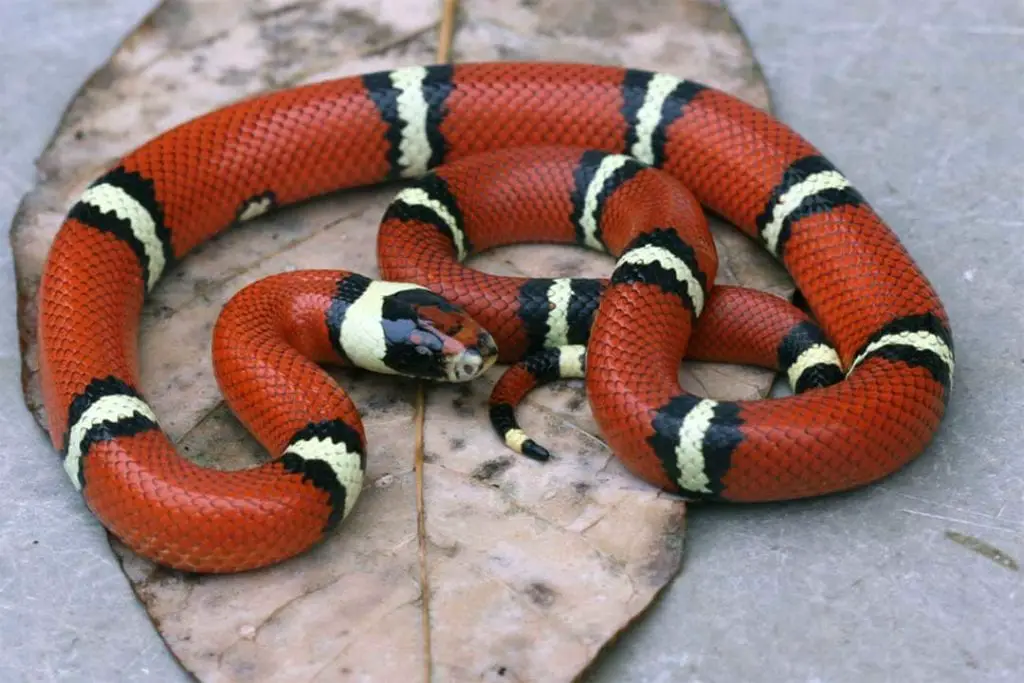
Snakes do not require special lighting to be happy. UVA may help with breeding, but it isn’t necessary. If you want lighting, make sure it does not heat the enclosure too much.
You should also put it on a timer to mimic a normal daylight cycle. These snakes are typically nocturnal so they do not appreciate lighting.
Shelter
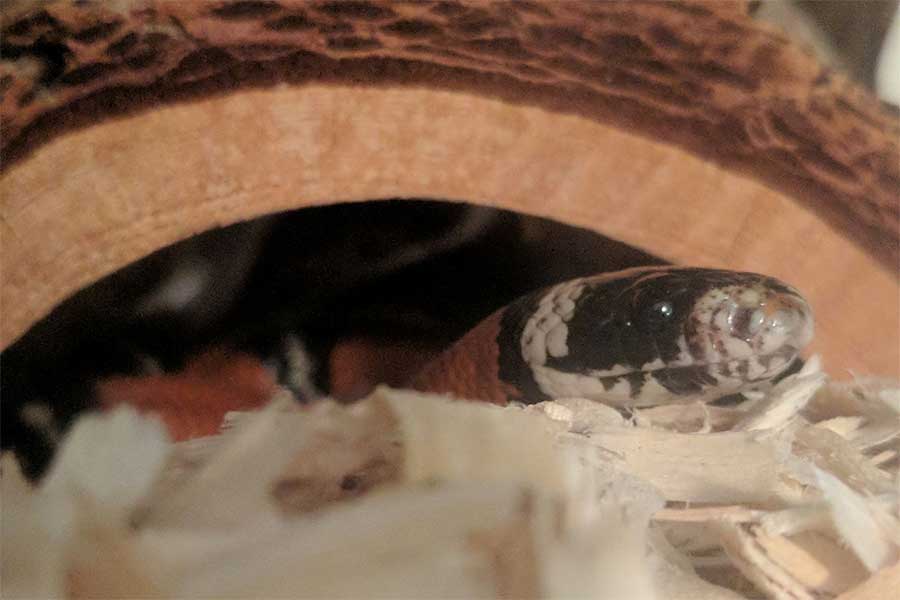
Milk snakes are common prey for many predators in the wild. This means that they need shelter to help them feel safe and secure. You should provide at least two hides that are just large enough for the snake to fit in completely.
One should be placed on the cool side and one on the warm. You should also fill any empty spaces with greenery or branches to help your snake feel less exposed.
Remember that you will need to clean hides often for your snake’s health. If it can’t be cleaned fully, it will need to be thrown away and replaced.
Water
Snakes all require a constant source of fresh water for drinking and soaking. This can also help maintain humidity in the enclosure. The water needs to be in a dish that is shallow but large enough to fit the snake if it wants to soak.
It should be easy to sanitize and heavy enough that the snake can’t flip it and flood the enclosure. This is a good option with a nice look to it.
Humidity
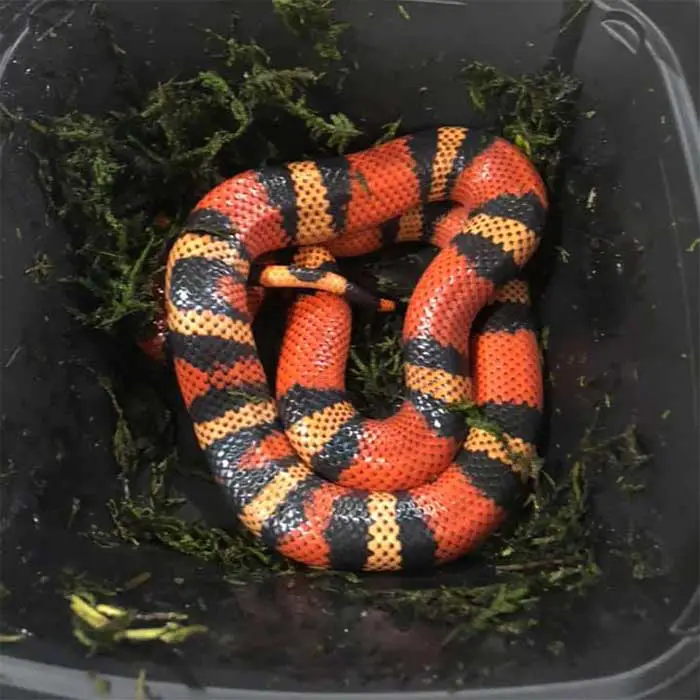
Humidity is important to allow your milk snake to shed correctly. With this subspecies, it is safer to go on the lower side since they are from an arid region.
Around 30-40% humidity as measured by a hygrometer will work nicely. You can offer a humid hide filled with damp sphagnum moss at all times to allow your snake to choose a more humid area if it is feeling dry.
This will help your snake stay more comfortable.
Enclosure Maintenance
You will need to keep your snake’s enclosure clean to help prevent illnesses. You should be replacing the water at least every other day and cleaning the water dish with soap at least once a week.
You should also check daily for urates and feces. These should be removed along with any soiled substrate and replaced.
About once a month you should do a deep clean. This means placing your snake in a temporary enclosure while you clean. This can just be a plastic tote with a secure lid and drilled air holes. You should turn off any heating and lights. Then you remove all the decorations.
Next, remove the substrate and scrub any waste you find. Make sure you use a reptile-safe sanitizer and be sure not to spray cold liquid on hot glass since it can make it crack.
Leave it open to dry while you clean the water dish and all the decorations and hides. Make sure everything is dry, then you can add fresh substrate and turn on the heating. Replace all the decorations and hides and add fresh water. Finally, put your snake back in its home.
Feeding
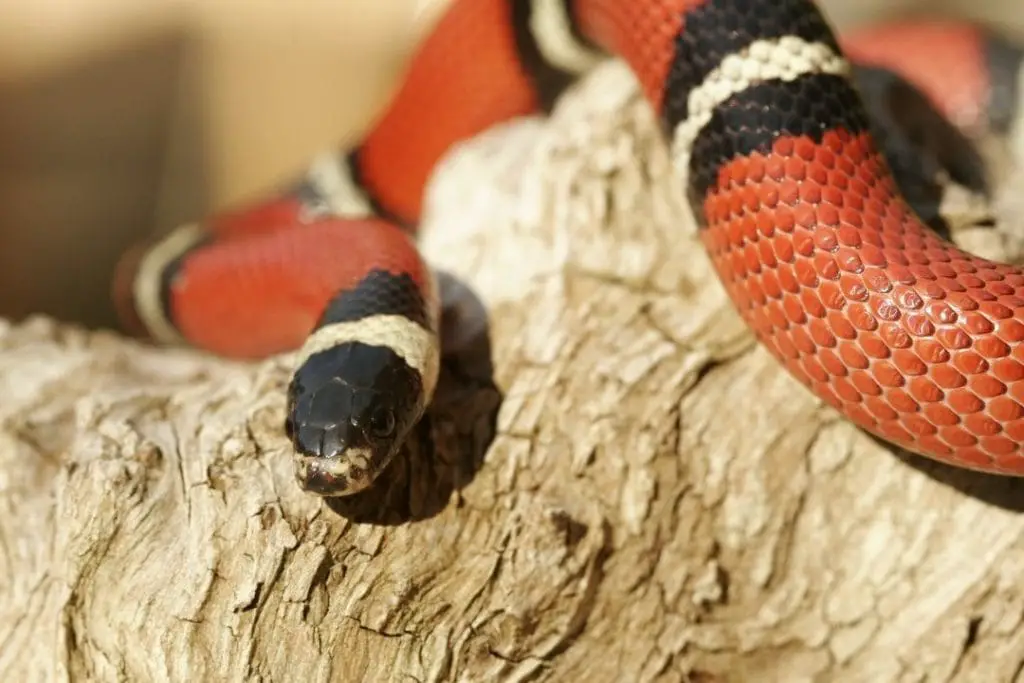
In the wild, milk snakes have a very large diet. They are opportunistic feeders and will take any prey they feel is small enough to eat.
This includes rodents, reptiles, amphibians, eggs, and even other snakes.
Type and Size of Prey
In captivity, Sinaloan milk snakes eat rodents. Mice are the most common since they are smaller which means they match the size of hatchlings well.
A hatchling milk snake will eat a newborn or fuzzy mouse about every 5-7 days. As your snake grows, you will increase the size of prey. It should be no wider than the widest part of your snake.
If you weigh your snake regularly, go for prey that is around 10-15% of the weight of your snake.
Adult milk snakes will eat an adult or jumbo mouse every 7-10 days. These snakes are typically voracious and will not pass up a meal. They typically only refuse if they are shedding.
Frozen or Live

The frozen vs live food debate has torn through the reptile-keeping community for years. There are arguments on both sides, so we will go over the pros and cons of each briefly.
Live pros:
- Allows for natural hunting behavior
- Picky snakes will typically take live prey
- More nutritious
Live cons:
- Can injure or kill your snake
- May have parasites
- Hard to locate in the right size
- Have to care for the mouse if your snake doesn’t want to eat
- More expensive
Frozen pros:
- Easy to stock up
- Cheaper
- Can buy online
- Can’t injure your snake
- Less likely to transfer diseases or parasites
Frozen cons:
- Some snakes won’t eat pre-killed
- Slightly less nutritious
To feed live, you will need to watch your snake to make sure the prey doesn’t injure it. You will have to acquire the mouse locally since live rodents can’t be shipped.
You can find live adult mice from local feeder mice breeders and pet stores. Specialized reptile stores and reptile shows frequently have live feeder mice for sale, but you will need to make sure they have the right size for your snake.
You can check local Facebook listings and Craigslist to find people who have spare feeder mice.
To feed frozen, you will need to defrost the mouse much like you defrost meat for your own usage. Place a mouse in the fridge about a day before you intend to feed your snake.
On feeding day, put the mouse into a BPA-free plastic bag and place it into 100-degree water. This will get the mouse back up to body temperature and make the snake more likely to strike.
Use hemostats or feeding tongs to offer the mouse to your snake. You can wiggle the mouse to make it seem alive if the snake is reluctant to strike.
You can acquire frozen mice locally from many of the same places you can buy live mice. I recommend and use micedirect, but you can also order online from places like Perfect Prey, Big Cheese Rodents, Layne Labs, and Rodent Pro.
How Often to Feed
Hatchlings need to be fed much more in the first year of life than an older snake. You should be weighing your snake to make sure it is growing steadily as a juvenile.
As an adult you want the weight to remain steady. A hatchling should be fed every 5-7 days. A yearling will eat about every 7 days.
Adult pet snakes should be fed an appropriately sized meal every 7-10 days. Breeding females should be fed smaller meals every 3 days.
Shedding
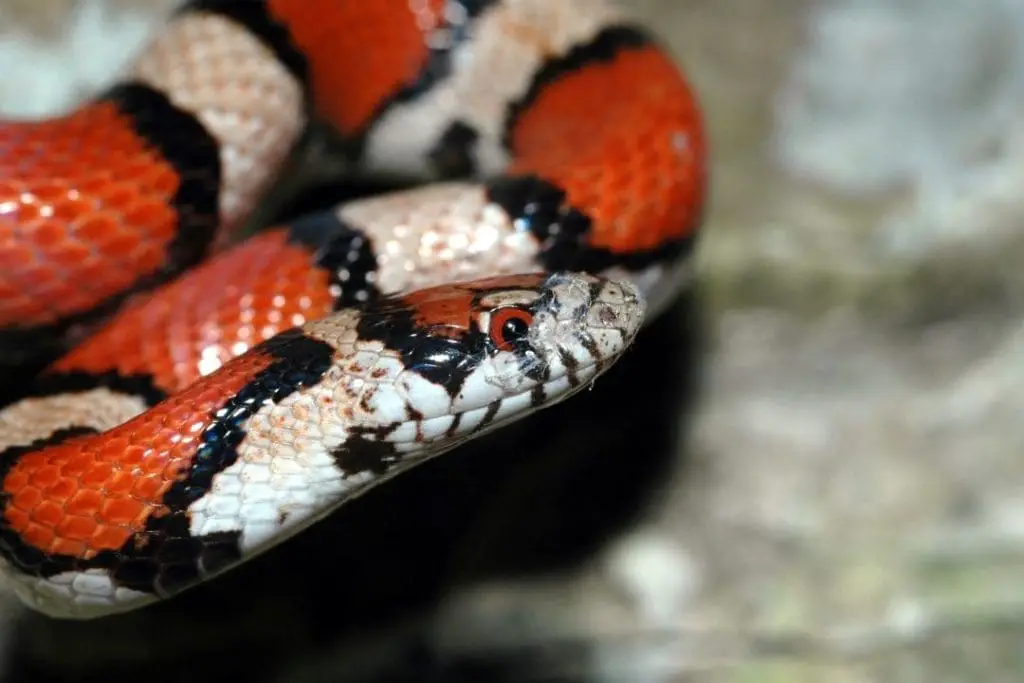
Shedding is important for your snake’s growth. A snake’s skin does not grow with it, so it must shed to make room for more growth.
When it is time for your snake to shed, you will notice that its colors will dull and its eyes will appear cloudy or blue. It will be like this for a few days since this is when the old layer of skin is separated from the new one.
Snakes that are in this part of shedding will be shy or grumpy since the animal can’t see well. Since snakes don’t have eyelids they have a special scale that goes over the eye called the eye cap.
This is the time that you should raise the humidity of the enclosure a bit and offer a damp hide full of sphagnum moss. You can make one using a plastic food storage container filled with damp but not wet moss.
Cut a hole in the lid and place it on the warm side of the enclosure. After a few days of cloudy eyes, your snake will seem to clear up.
You will notice that it crawls over decorations and rubs on them often. This is to help loosen the old skin. Once it is loose the snake will shed.
You will need to examine the shed skin to make sure the whole thing is intact. Pay special attention to the eye caps and the tail tip since these are the parts most likely to be stuck.
If you notice that the shed is in pieces, you should take the time to soak your snake in warm water.
After half an hour, try to gently remove any stuck shed with clean tweezers. If it doesn’t come off easily, repeat the soaking. If your snake dislikes being soaked, try a damp hide instead.
Never leave a stuck shed on your snake since it will harden.
If it is around part of the body like the tail, it can function as a rubber band and cut off circulation. This can lead to injury over time.
Hibernation
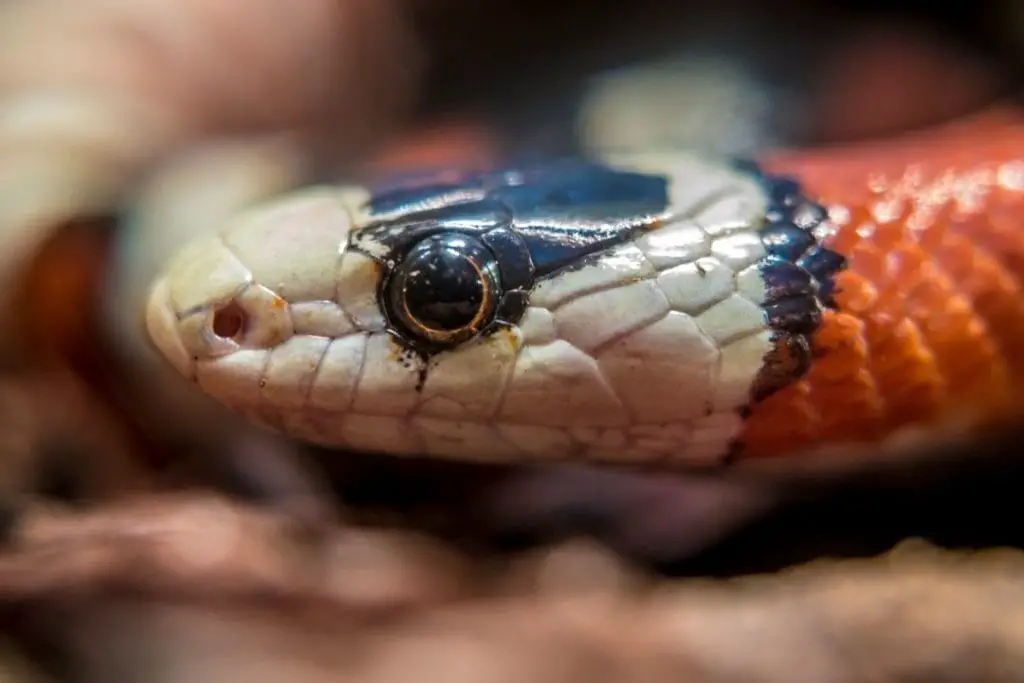
During the winter months, snakes go through a state known as brumation. Like hibernation, this is a reaction to survive cold months when food isn’t available.
For snakes, they need high temperatures to digest. This means that once the temperature drops the animal will stop eating. It will spend most of its time asleep.
Brumating snakes will typically only wake up to drink water for a brief time period. In captivity, you do not need to induce brumation unless you are trying to breed your snake.
Handling Sinaloan Milk Snakes
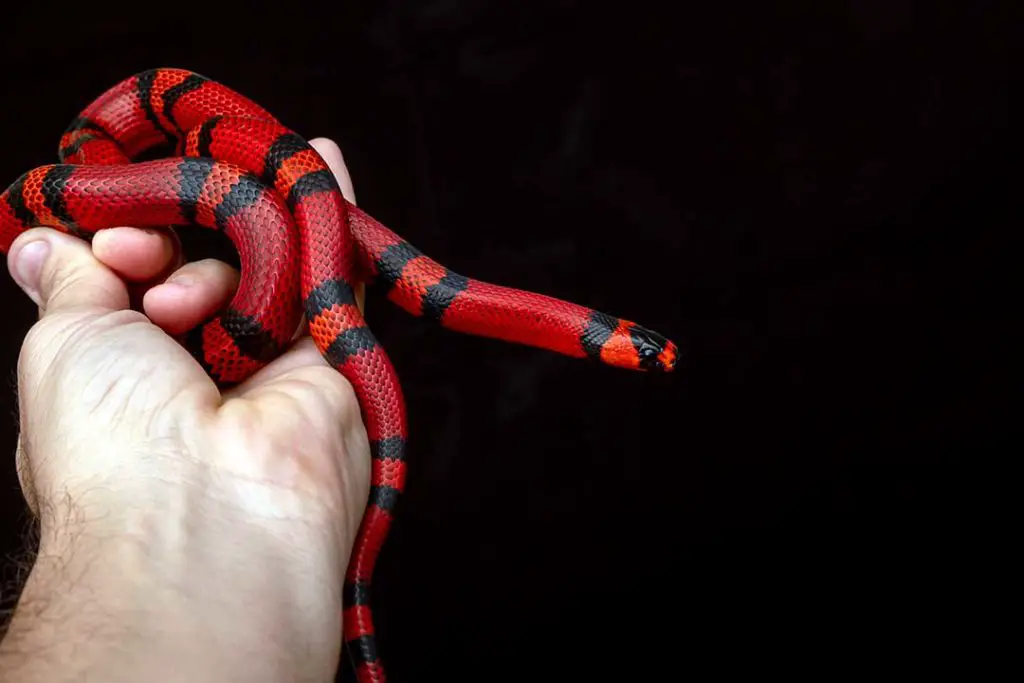
Young Sinaloan snakes are anxious animals.
Their main defensive behavior is to produce a foul scent and shake their tails in addition to biting. While they are nervous at first, they do calm over time with patient handling.
Always approach your snake from the side after you are certain it is aware of you.
Gently lift it from about the mid-body and support as much of it as you can. Your snake will likely be frightened at first, but hold it gently until it calms down.
Once it has been calm, you can return the animal to its enclosure. Handle about 2 or 3 times a week until your snake gets used to you and relaxes. Keep handling sessions under about 5 minutes and slowly lengthen them until you can go for 30 minutes.
Under 30 minutes is recommended since your snake might become too cold. If your snake bites you, do not pull back or drop the snake.
This can make your injury worse and injure or kill the snake. You can easily break its teeth or jaw if you aren’t careful. If your snake is hanging on to you and won’t release, the easiest thing to do is put a drop of mint mouthwash where the snake is biting. It should release you after that.
Snakebites from small snakes like these are the equivalent of a cat scratch. Just wash the bite and use antibiotic ointment and you should be fine.
Common Issues
Here we will go over a few common concerns for new snake owners.
My Snake Isn’t Eating
Milk snakes rarely refuse meals. The first thing to check is temperature and humidity. Use your temperature gun to verify the surface temperatures and check the hides.
If this is fine, make sure your snake isn’t about to shed. Most snakes do not want to eat when they are shedding. Male snakes will also refuse food during the breeding season.
Make sure you are only offering food after your snake has defecated from its last meal. If the food is a different color like you are offering a black mouse when it normally eats white could cause it to refuse.
Snakes may not recognize a different fur color as belonging to food. If your snake is ill, it may refuse food. Look for signs of parasites like changes to feces or a hard lump in the stomach even if the snake has not fed recently.
Check for signs of infection like mucus production and inflammation in the mouth.
Color Morphs
Milk snakes have the fewest color morphs on the market. Most other colors of milk snakes in the pet trade are from other subspecies of the same snake species. If you can find a color morph, you are certain that you have a captive-bred animal.
Albino Sinaloan Milk Snake
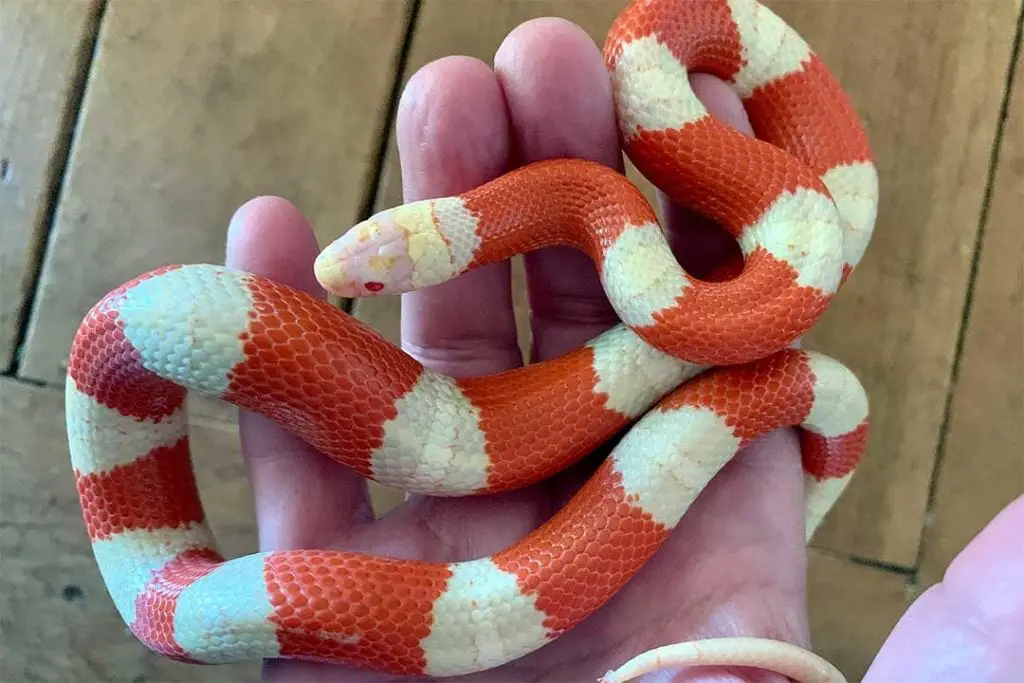
The main color morph for the Sinaloan milk snake is the albino variant. These snakes are missing the black pigment, so they are mainly banded with red, white, and a faint yellow.
They are very beautiful animals. If you can get one, you will be certain that you have a captive-bred animal. Remember to never buy wild-caught since they are less healthy and may not adjust to captivity. Removing wild animals for the pet trade can also threaten wild populations.
Regurgitated Food
Regurgitation is a bad sign in milk snakes. They typically only do this when stressed or if the food is bad. If it happens once, give your snake two weeks before you offer food again.
Leave your snake alone for 2 days to give it time to digest. If it happens multiple times this can be a sign of a parasite. Head to the vet.
Respiratory Infections
Respiratory infections in Sinaloan milk snakes are typically caused by too much humidity or a dirty enclosure. You should keep the humidity on the lower side and clean regularly.
Signs of respiratory infections include wheezing, clicking, breathing with the mouth open, and excess mucus. Take your snake to the reptile vet since these are very treatable.
Sources
Conclusion
Now you should know everything you need to keep a Lampropeltis triangulum sinaloae (Sinaloan milk snake scientific name) happy and healthy. If you have owned this subspecies, please leave your experiences with these snakes in the comments.
If you have any questions or comments, be sure to leave your feedback.
